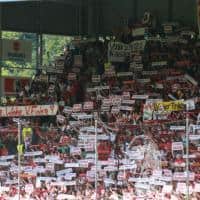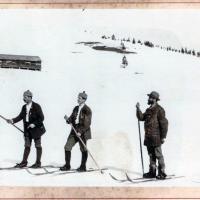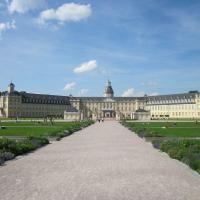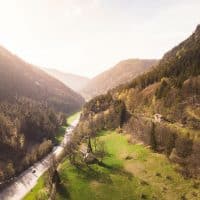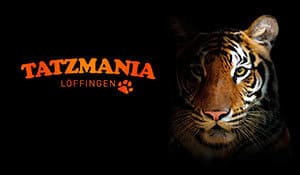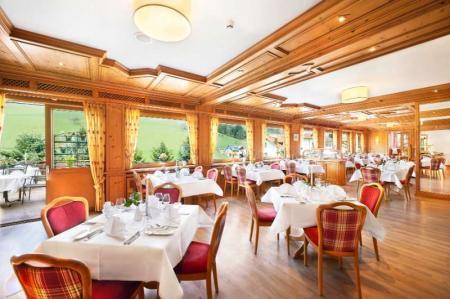In the Black Forest, the Swabian-Alemannic carnival with its centuries-old customs determines the fifth season. Pagan cults, such as the noisy driving out of winter, mix with Christian rituals, such as wet, happy celebrations and the last meat enjoyment before Lent. The term “Fasnacht” stands for the six days from “Dirty” Thursday or “Schmotzige Dunschtich” to Ash Wednesday. During numerous parades and meetings of fools, dancing witches, wild men and many other colorful "larvae" populate the streets and inns of the towns. They have fun and joke with the audience.
Carnival, Mardi Gras, Carnival - a little journey to the origins
Between Christmas and the days of fasting in preparation for Easter, there has been a time of "anarchy" in all German regions since the Middle Ages. Authorities - mostly the Church - were mocked; Rules no longer applied. Protected by masks and disguises, the common people enjoyed their “great days”. People knew that from Ash Wednesday onwards, strict abstinence was required - in every respect. With the Reformation, the “fifth” season lost its importance, especially in Protestant areas. The Rhenish carnival revived from 1815 when Cologne was occupied by Prussians after the French had withdrawn. These new authorities made the "junkies" ridiculous. In southwest Germany, the more traditional Swabian-Alemannic carnival survived.
Colorful tradition and handed-down heritage - the carnival in the southwest
The fifth season, as it is celebrated in the Black Forest region, differs in many ways from the Rhenish carnival. Customs and old manners are in the foreground. In contrast to the carnival societies, the local clubs organize themselves in so-called “fools guilds”. They maintain the customs of their respective hometowns and organize events and large parades. Characteristic are the lavishly designed costumes, also called "Häs", made of a wooden mask or "larva" and the fool's dress. The Häträger usually keep their artistic equipment for a lifetime and partly pass them on. The figures shown often relate to legends and traditional, actual events.
Witches dance and wild people - shaping the Swabian-Alemannic carnival
Despite a large number of conspicuous bearers, a few basic figures can be made out. Among other things, keep appearing:
- Devil figures - they are among the oldest disguises. Due to the many prohibitions and rules of the church, the celebrants disguised themselves even more as the "incarnate". An impressive example today is the torchlight parade of the Triberg devils.
- Carnival witches - they include the dancing witches from Löffingen from the Upper Black Forest.
- Wild men or wild people - could be produced cheaply for the farmers and the common people with simple means. The hat from the nutshell hansele Wolfach for example, shows itself occupied with thousands of nutshells.
- Animal figures - an example is the "Hoorige Bär", a thickly padded straw figure made of singing or the bird-like "night crab" of the Murrhardt fools guild.
In addition, numerous other fools, legends and mythical creatures are up to mischief during the parades and events - much to the delight of the audience.
From the larvae dusting to the fool's jump - a few carnival rituals

Rose Monday parade in Todtnau
The Swabian-Alemannic carnival starts in many places on the sixth of January with the traditional “larva dusting”. The participants free masks and robes from the dust of the past year. Witches, devils and other creatures come back to life and the great days can begin. After the first events and meetings of the fools, the hot phase begins on “Dirty” Thursday. Many people say “dirty”. Alemannic dialects for “greasy”. The name refers to the fatty baked goods, for example the donuts or the indispensable “Fasnachtskiechli”. The parades, also known as fool's jumps, are a special experience in many places in the southwest. In addition to impressive hat bearers, music and fanfare bands accompany the route. This is followed by fun goings-on in the bars and ballrooms. Usually on the weekend after the foolish time, the event takes place in neighboring Basel Basel morning prank instead of. The Hit the slices is the end of the Swabian-Alemannic carnival.
Always worth a visit - the colorful hustle and bustle in the Black Forest and the region
Thanks to reports and numerous television broadcasts, the carnival in the Black Forest has been booming for years. Relocations worth seeing take place in, among other places Hornberg, Rottweil or in Furtwangen instead of. It is precisely the contrast to the Rhenish Carnival that gives many guests their special charm. The artistically carved masks and elaborate costumes cast a spell over the audience. A look behind the scenes and to the historical roots of the colorful hustle and bustle is worthwhile. In 2014 the Swabian-Alemannic Carnival was added to the UNESCO list of intangible cultural heritage. A cultural asset to celebrate with!

